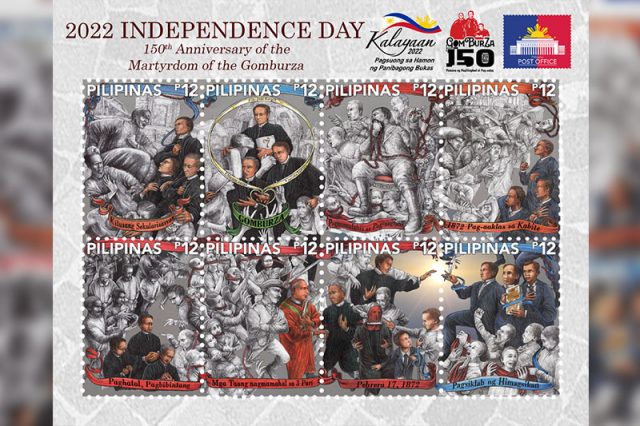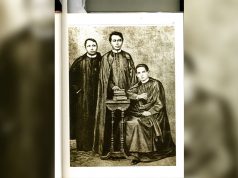
MaJoHa stamps?
No, it’s GomBurZa.
The Philippine Postal Corporation (PHLPost) unveiled special commemorative stamps featuring the three martyred priests sentenced to death by the Spaniards for the country’s 124th Independence Day.
The stamps mark the 150th anniversary of the priests’ martyrdom, namely Fathers Mariano Gomes, Jose Burgos and Jacinto Zamora.
They are collectively known as “GomBurZa” which is taken after their names. “Gom” is for Gomes, “Bur” is for Burgos while “Za” is for Zamora.
PHLPost said that its souvenir sheet of eight features a panel of stamps depicting the events surrounding the lives and martyrdom of the priests.
“The stamps illustrate the sacrifices and heroism of Fathers Gomes, Burgos and Zamora who gave their lives for freedom,” Postmaster General Norman Fulgencio said.
The stamps will be sold at P12 per piece. It is available at the Philatelic Counter at the Manila Central Post Office.
The public can also inquire through hotlines (8527-01-08 or 8527-01-32) or by following Pilipinas Philately for updates.
Meanwhile, the announcement of the stamps’ unveiling led some Filipinos to recall a made-up term uttered by a “Pinoy Big Brother” housemate before.
“Gomburza pala ‘yun, kala ko MAJOHA,” a Facebook user said.
“Uy MaJoHa,” another online user commented.
“Hindi ba MaJoHa ‘yan?” a different Filipino quipped.
“MaJoHa” refers to the made-up term of a teen housemate in the reality show during a time-bound quiz bee last April.
Host Robi Domingo asked: “Ang tatlong Catholic priests na sina Mariano Gomes, Jose Burgos, Jacinto Zamora na hinatulan ng kamatayan noong panahon ng Kastila ay mas kilala sa tawag na…?”
The housemate who first touched the buzzer attempted to answer “MarJo,” an attempt to unite the first names of Gomes and Burgos.
The second contestant answered, “MaJoHa,” another attempt at combining the priests’ first names.
The term trended on social media, which prompted calls to bring back Philippine history into the high school curriculum.
This year marks the 150th year since the GomBurZa was garroted by the Spaniards on Feb. 17, 1872, for supposedly instigating the mutiny in Cavite despite doubtful evidence.
The Cavite Mutiny, which happened on Jan. 20, 1872, was an uprising of Filipino soldiers and laborers who revolted against the Spaniards for voiding their exemption from the payment of tributes.
The incident prompted massive arrests against those who openly campaigned and supported liberal ideas, even those who were not connected with the mutiny.
These included the GomBurZa, who has long voiced out unequal treatment towards secular Filipino clergy in favor of the Spanish friars.
Their martyrdom led to the first stirrings of the Philippine Revolution.









